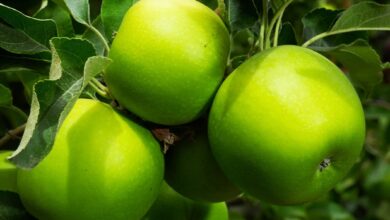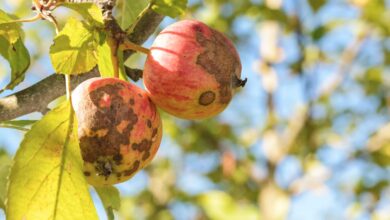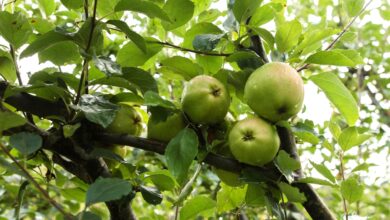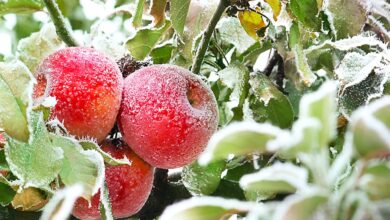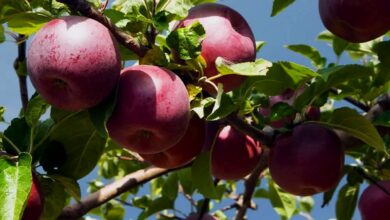How to Fertilize Apple Trees for Maximum Fruit Yield: A Complete Guide
Apple Tree Feeding 101: Best Fertilizers and Tips for Healthy Growth

The Ultimate Guide to Apple Tree Fertilization: When and How to Feed Your Trees
Cultivating apple trees for fruit requires a lot of energy. Apple trees need to be pruned and fertilized every year in order to concentrate their energy on yielding a plentiful crop. Apple trees consume a lot of calcium and potassium, but they are only moderate users of most other nutrients. Therefore, when feeding apple trees, these should be applied annually.
But what about other nutrients? Continue reading to learn about fertilizing apple trees.
Is It Adequate to Fertilize Apple Trees?
As previously indicated, an apple tree probably needs annual feedings of both calcium and potassium, but a soil test is the best way to find out exactly what other nutrients your tree needs.
The only accurate way to ascertain what kind of apple fertilizer might be required is to conduct a soil test.
In general, all fruit trees prefer a pH of 6.0 to 6.5 in their soil. Go ahead and add a small amount of bone meal or a starter fertilizer diluted with water if you are just planting an apple sapling. Three weeks later, fertilize the apple tree by circling the trunk 18 to 24 inches (46–61 cm) with ½ pound (227 g) of 10–10–10.
How Apple Trees Are Fertilized
Know your limits before fertilizing apple trees. Mature trees have extensive root systems that can reach depths of 4 feet (1 m) and extend outward up to 1.5 times the diameter of the canopy. The majority of nutrients are absorbed by smaller feeder roots that live in the top foot (31 cm) of soil, but these deeper roots also store excess nutrients for the next year.

Apples require a uniform application of fertilizer across their surface, starting at a distance of one foot (31 cm) from the trunk and going well beyond the drip line. Fall, when the leaves have fallen, is the ideal time to fertilize an apple tree.
Spread fertilizer (10-10-10) at a rate of one pound (454 g) per inch (2.5 cm) of trunk diameter, measured one foot (31 cm) above the ground, when applying it to apple trees. A maximum of 2 ½ pounds (1 kg) of 10-10-10 can be used annually.
A 6 inch (15 cm) band of calcium nitrate may also be applied with the drip line at a rate of 2/3 pound (302 g) per 1 inch (2.5 cm) of trunk diameter and ½ pound (227 g) of potash-magnesia sulfate per 1 inch (2.5 cm) of trunk diameter. Limit yourself to no more than one-half pound (794 grams) of calcium nitrate or one-half pound (567 grams) of sulfate of potash-magnesia (sul-po-mag).
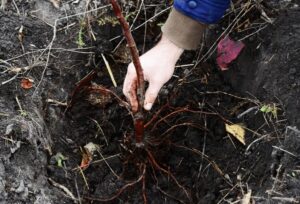
Between one and three years old, young apple trees should grow at least one foot (31 cm) annually. If not, raise the fertilizer (10-10-10) by 50% in the following two and three years. Four-year-old trees may or may not require nitrogen fertilizer, depending on how big they get. If they grow less than six inches (15 cm), use the above rate; if they grow more than one foot (31 cm), use sul-po-mag and boron if necessary. Not a calcium nitrate or 10-10-10!
- An abundance of boron deficiency is common in apple trees. You may be deficient in boron if you see brown, corky spots on the inside of the apples or bud death at the ends of the shoots. Applying ½ pound (227 g) of borax every three to four years per full-sized tree is a simple remedy.
- Absence of calcium causes soft apples to rot quickly. As a preventative, apply two to five pounds (1-2 kg) of lime per hundred square feet (9 m²). If this is required, keep an eye on the pH of the soil and make sure it stays between 6.5 and 7.0 after application.
- In addition to preventing frost damage in the spring, potassium enhances the size and color of fruit. Apply 1/5 pounds (91 g) of potassium per 100 square feet (9 m2) annually for a typical application. Potassium deficiencies cause paler-than-normal fruit, leaf curl, and browning of older leaves. Apply between 3/10 and 2/5 (136–181 g) of a pound of potassium per 100 square feet (9 m²) if you notice any deficiencies.
To adjust the feeding schedule for your apple tree, take a soil sample every year. You can get assistance from your nearby extension office in interpreting the data and making recommendations for changes to your fertilization program.

